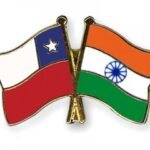BRICS BANK OKAYS FIRST LOAN OF $811 MN FOR GREEN ENERGY

The New Development Bank (NDB), formed by the BRICS group of emerging nations, has approved its first loans – $811 million for renewable energy projects in Brazil, China, India and South Africa.
The BRICS bank, with authorised capital of $100 billion, started work last year on funding initiatives for infrastructure projects in emerging markets and in its initial foray has lent $300 million to Brazil, $81 million to China, $250 million to India and $180 million to South Africa.
The BRIC [Brazil, Russia, India and China] idea was first conceived in 2001 by Goldman Sachs as part of an economic modelling exercise to forecast global economic trends over the next half century. BRICS is an acronym for an association of five major emerging national economies: Brazil, Russia, India, China and South Africa. BRIC Foreign Ministers at their meeting in New York on 21st September 2010 agreed that South Africa may be invited to join BRIC. Accordingly, South Africa was invite to attend the 3rd BRICS Summit in Sanya on 14 April 2011.The BRICS members are all developing or newly industrialized countries, but they are distinguished by their large, fast-growing economies and significant influence on regional and global affairs; all five are G-20 members.
Seven summits have been held so far; the first in Yekaterinburg, Russia, 2009; second in Brasilia in 2010, the third in Sanya, China in 2011; the fourth in New Delhi, India in 2012; fifth in South Africa in 2013; sixth in Brazil in 2014 and seventh in ,Ufa, Russia in 2015. The seventh summit coincided with the entry into force of constituting agreements of the New Development Bank and the BRICS Contingent Reserve Arrangement and during the summit inaugural meetings of the NDB were held, and it was announced it would be lending in local currency; and open up membership to non-BRICS countries in the coming months.
The New Development Bank (NDB), formerly referred to as the BRICS Development Bank, is a multilateral development bank operated by the BRICS states (Brazil, Russia, India, China and South Africa) as an alternative to the existing American and European-dominated World Bank and International Monetary Fund. The goal of the bank is to “mobilize resources for infrastructure and sustainable development projects in BRICS and other emerging economies and developing countries”. The bank is headquartered in Shanghai, China. Each participant country holds an equal number of shares and equal voting rights, and none of the countries will have veto power.
The BRICS Contingent Reserve Arrangement (CRA) is a framework for the provision of support through liquidity and precautionary instruments in response to actual or potential short-term balance of payments pressures. It was established in 2015 by the BRICS countries Brazil, Russia, India, China and South Africa. The legal basis is formed by the Treaty for the Establishment of a BRICS Contingent Reserve Arrangement, signed at Fortaleza, Brazil on 15 July 2014. It entered into force upon ratification by all BRICS states, announced at the 7th BRICS summit in July 2015. The objective of this reserve is to provide protection against global liquidity pressures. This includes currency issues where members’ national currencies are being adversely affected by global financial pressures. The CRA is generally seen as a competitor to the International Monetary Fund (IMF) and along with the New Development Bank is viewed as an example of increasing South-South cooperation.






0 Comments